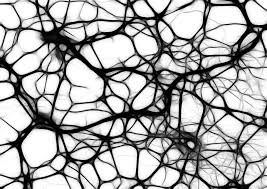Abstract
V3 spinal interneurons are a key element of the spinal circuits, which control motor function. However, to date, there are no effective ways of deriving a pure V3 population from human pluripotent stem cells. Here, we report a method for differentiation and isolation of spinal V3 interneurons, combining extrinsic factor-mediated differentiation and magnetic activated cell sorting. We found that differentiation of V3 progenitors can be enhanced with a higher concentration of Sonic Hedgehog agonist, as well as culturing cells in 3D format. To enable V3 progenitor purification from mixed differentiation cultures, we developed a transgene reporter, with a part of the regulatory region of V3-specific gene Nkx2-2 driving the expression of a membrane marker CD14. We found that in human cells, NKX2-2 initially exhibited co-labelling with motor neuron progenitor marker, but V3 specificity emerged as the differentiation culture progressed. At these later differentiation timepoints, we were able to enrich V3 progenitors labelled with CD14 to ~ 95% purity, and mature them to postmitotic V3 interneurons. This purification tool for V3 interneurons will be useful for in vitro disease modeling, studies of normal human neural development and potential cell therapies for disorders of the spinal cord.
Introduction
Ventral spinal interneurons are an integral part of spinal neural circuits—they integrate and relay information received locally and from supraspinal projections. Recent studies have shed light on their importance in generating central pattern generator (CPG) rhythmic outputs1,2,3,4,5 and fine-tuning the motor output6,7. Moreover, propriospinal interneurons have been shown to be actively recruited into newly forming circuits after spinal cord injury, and therefore, they have an important role in neuroplasticity8,9. These findings suggest that interneurons should be a key component of in vitro models of spinal neural circuits and represent a promising candidate for network restoration in disease or injury to the spinal cord.
Interneuron-specific transplantation studies for spinal cord injury treatment have previously been performed using the subclass V2a with promising histological and functional recovery outcomes10,11. However, the use of spinal interneurons in transplantation, as well as in vitro modelling, is restricted by the scarcity of these cell types in embryonic spinal cord tissue and by the complex cell type composition of ex vivo cell preparations. Recently, emerging stem cell differentiation protocols have offered a breakthrough in using specific interneuron subtypes. Mouse embryonic stem cells (mESCs) have been used to derive V2a interneurons12, V3 interneurons6,13, and most recently V0 interneurons14. However, successful optimised differentiation of human pluripotent stem cells (PSCs) into specific interneuron subtypes, to date, has only been achieved for V2a interneurons15,16.
V3 interneurons are one of the key populations considered for spinal cord injury therapy because they are involved in locomotion—behaviours such as swimming, runnning and walking17,18, and especially in establishing the regularity of locomotor rhythm19. In vitro, V3 and V2a interneurons alone are enough to induce rhythmic bursts similar to drug–induced fictive CPG activity20. They have an advantage of being largely commissural (80% of the cells) and projecting caudally—playing a significant role in contralateral excitation21,22, as well as being connected to corticospinal tract projections in a healthy spinal cord23. V3 interneurons are interconnected with different spinal neuron subtypes: they provide 22% of the vesicular glutamate transporter 2 (vGlut2+) synapses onto motor neurons, 24–27% of the vGlut2+ contacts onto inhibitory interneurons, and the rest connect onto LIM Homeobox 3 (Lhx3+) V2 interneurons and other commissural interneurons21. These qualities relating to extensive connectivity and functional involvement in locomotion make V3 interneurons a good target for cell transplantation. However, the lack of human derivation strategies for this spinal interneuron subtype24 represents a severe limitation for the advancement of the fields of in vitro modelling and development of cell therapies for spinal cord injury.
In this report, we describe a combined strategy for derivation and purification of V3 spinal interneurons from a human embryonic stem cell (hESC) model. We enriched for NKX2-2-expressing V3 progenitors in differentiation cultures by optimizing the concentration of specific small molecules and the culturing method. In order to purify the progenitors, we built a transgenic reporter construct with a small V3-specific regulatory region based on the enhancer of the Nkx2-2 gene to express the surface marker CD14 and to allow magnetic-activated cell sorting (MACS) enrichment. V3 progenitors enriched with this method matured in culture to postmitotic SIM1+ V3-interneurons.
Results
Human embryonic stem cell differentiation can be steered towards development of V3 progenitors
Spinal neuronal progenitors can be derived from PSCs using directed differentiation, which mimics normal embryonic development. Since there was no previously established protocol for deriving V3 progenitors from human PSCs, we used a protocol suitable for the generation of spinal MNs25,26 as a starting point. To derive V3 progenitors, neuroepithelial identity was first induced for the first 6 days of culture combining inhibition of SMAD signaling and activation of WNT pathways25 (Fig. 1a). Sonic Hedgehog (SHH) and retinoic acid (RA) mediate the specification of ventral neural tube progenitors27, therefore, on day 6 of differentiation (d6), the induction media was supplemented with RA and an SHH agonist. Higher SHH agonist purmorphamine concentration (0.5 μM) led to a significant increase in the number of V3-NKX2-2+ progenitors compared to a lower concentration (0.1 μM)—28% and 1.6% of total cells, respectively (Fig. 1b). Prolonging SHH agonist incubation did not lead to significant changes—although a slightly earlier timepoint (d16) could be more optimal than a later timepoint (d20) (Supplementary Fig. 1a). Using a more potent Smoothened agonist (SAG) compared to purmorphamine (half maximal effective concentration (EC50) of 3 nM and 1.5 μM, respectively)28 led to a small but insignificant increase (Fig. 1c), indicating that the upper limit of SHH stimulation had been reached; 0.5 μM SAG was used in further experiments. RA concentration was titrated for both agonists, without substantial changes in either condition (Supplementary Fig. S1b).







